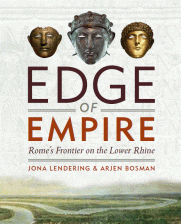Whenever a Dutchman visits Persepolis, he will be pleasantly surprised. Upon entering the big gate he is greeted by a fellow-Dutchman: a man named Cornelis de Bruijn left behind his signature more than three hundred years ago.
OK, that was vandalism – but if anyone would have had a right to cut his name in one of the monuments, it would have been De Bruijn, whose story is part and parcel of the story of Persepolis. He was born in 1652 and became famous with a book on his travels to Italy, Egypt, Jerusalem, the Aegean Sea, and Constantinople. Published in 1698, it soon became a best-seller, and it is easy to understand why: being a trained painter, he could add splendid illustrations. For the first time, Europeans could get an idea of the interior of the Great Pyramid, could see the Column of Pompey in Alexandria, or enjoy a view of Jerusalem or Palmyra, Smyrna or Constantinople.
These drawings were unique, and the book was translated into several languages – unfortunately, not all of them very accurate. The English edition (1702) was based on the French one (1700), and until the twentieth century, you would not be able to find De Bruijn’s book in the catalog of, say, the Bodleian Library in Oxford, unless you knew that the English translator had been capable of mistranslating even the author’s name (Corneille le Brun).
In 1703, De Bruijn left Amsterdam for a voyage that would bring him to Russia, Persia, Ceylon, and Java (where he discovered a small kangaroo-like animal that is still called Thylogale Brunii). It was his visit to Persepolis, however, that made him immortal. In November 1704, he arrived in the capital of the ancient Achaemenid Empire, where he was to stay until January. Although several European travelers had already offered descriptions of the site, none of them spent two and a half months amidst the ruins, became so well-acquainted with the site, or added such marvelous illustrations to his book.
De Bruijn’s account consists of several parts. First, he describes the terrace and its buildings, which can easily be identified with the remains that are visible today. De Bruijn is not always able to interpret the buildings, but recognizes that the rock reliefs belonged to royal tombs. He also mentions the four Achaemenid tombs at Naqsh-i Rustam and the Sassanian rock reliefs, which he believes to be representations of the legendary Persian hero Rustam. (This must be information from a local guide.) Next, De Bruijn compares his observations to what is written by the ancient authors. For example, he is able to identify Median and Persian dresses. In the next chapters, he describes the history and customs of the ancient Persians. All this is based on Greek and Latin sources, but he impartiality adds a chapter with the Persian side of the story.
De Bruijn’s combination of antiquarianism and historiography was later popularized by Winckelmann and Gibbon, but was still rare in the early eighteenth century; in fact, De Bruijn was one of the first to attempt to corroborate a historical account by using artifacts. How innovative this was, becomes clear when we take into account that even today, it is possible to become an ancient historian without taking part in an archaeological excavation.
De Bruijn’s Persian book, published in 1711, was no success, even though the reviews in the Acta eruditorum and Journal des Sçavans were enthusiastic. But the Dutch Republic was involved in the War of Spanish Succession and suffered heavily; few people could afford to buy the book. Worse, people found it hard to believe his story. The painter-traveler died in 1727, bankrupt and forgotten.
You can find a longer biography here.



 Subscribe to feed
Subscribe to feed